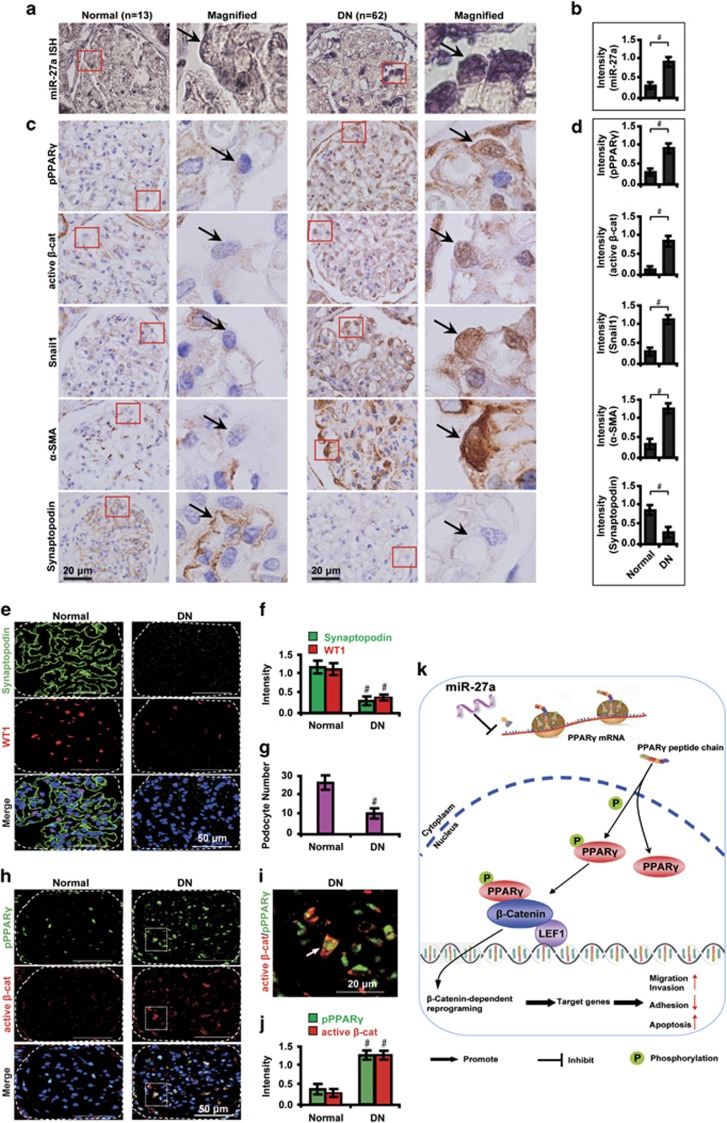Figure 6.
Expression patterns of miR-27a and PPARγ/β-catenin signaling molecules in human renal biopsy samples. Representative (a) ISH staining and (b) quantitative data illustrate the expression of miR-27a in human renal biopsy tissues from DN patients (n=62) and control healthy donor transplant kidney tissues (n=13). Representative (c) immunohistochemical staining and (d) quantitative data illustrate the expression of pPPARγ and β-catenin target genes in different groups as indicated. Fresh snap-frozen human renal biopsies were sectioned and hybridized with digoxygenin (DIG)-labeled miRCURY Locked Nucleic Acid (LNA) microRNA Detection Probes. Paraffin-embedded human renal biopsy sections were immunostained for pPPARγ, active β-catenin, snail1, α-SMA and synaptopodin. Red insets in the left side images of each panel were magnified and shown on the right side. Black arrows indicate podocytes. Representative (e) immunofluorescence images and quantitative data show (f) glomerular synaptopodin (green) and WT1 (red) expression and (g) podocyte number in human renal biopsy samples. (h) Representative immunofluorescence micrographs show glomerular pPPARγ (green) and active β-catenin (red) expression in human renal biopsy samples. Scale bar, 50 μm. (i) Magnified white insets show the colocalization of pPPARγ and active β-catenin (yellow). Scale bar, 20 μm. (j) Quantitative data show the level of pPPARγ (green) and active β-catenin (red). Nuclei were visualized by DAPI. White arrow indicates colocalization of pPPARγ and active β-catenin. Glomeruli were demarcated with white dashed lines. (k) A hypothetical model illustrating that miR-27a, via PPARγ-mediated β-catenin activation, promotes podocyte injury in DN. MiR-27a inhibits PPARγ gene transcription whereas indirectly stimulates PPARγ phosphorylation, which activates β-catenin signaling and triggers β-catenin-dependent reprogramming and target gene expression levels. These events promote podocyte injuries as demonstrated by increased migration, invasion, and apoptosis, and decreased adhesion abilities. #P<0.001. Active β-cat, active β-catenin; LEF1, lymphoid-enhancer factor 1; P, phosphorylation; pPPARγ, phosphorylated peroxisome proliferator-activated receptor γ; WT1, Wilm's tumor 1

